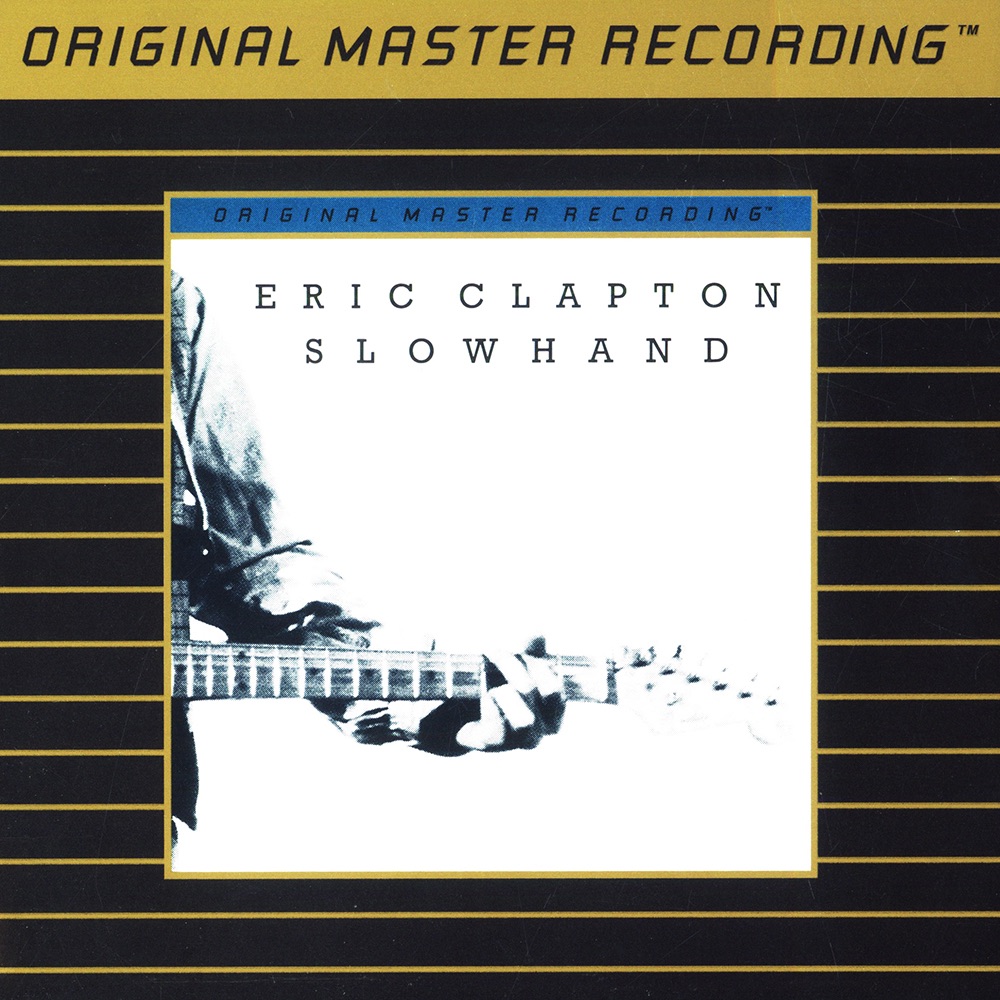
A great record, and the Mobile Fidelity treatment is extraordinary. But I also had the Mobile Fidelity LP, which sounds just as good. So I traded in the vinyl. I got top dollar, which I used to acquire more great records. Most audiophiles will tell you I made a mistake - I should have kept the record and traded in the CD - but I’m really OK with it. I got a lot of money for it. If you want the record it was still available the last time I looked at Sound Fixation in Stratford, Ontario. But that's a while ago now, and be prepared to pay around $160 for it. It’s one of those absolutely essential recordings, and it’s very hard to find.
Yeah, there’s Cocaine and Wonderful Tonight, but I really like May You Never, Next Time You See Her and Peaches and Diesel. The album showcases Slowhand - Clapton's nickname - during some really vulnerable and personal moments. It’s sparse and quiet but it’s also extraordinarily honest. And its muted simplicity is really just an illusion: there are much more complex emotions at play and you have to listen to hear them. It takes a couple of plays before it starts to sink in, and although the voice is quiet and the guitar playing anything but flashy it’s still a masterpiece. Sometimes it’s the notes you don’t play, as much as the ones you do. This isn’t what people expected he would come out with at the time, and it has matured into a legendary recording in the years since.
The Yardbirds’ manager, Giorgio Gomelsky, gave Eric Clapton the nickname Slowhand in early 1964. The band's rhythm guitarist, Chris Dreja, recalled that whenever Eric Clapton broke a guitar string during a concert he would stay on stage and replace it. The English audiences would wait out the delay by doing a slow handclap.
Clapton backed this story up when in the 1980s he told his official biographer, Ray Coleman, “My nickname of Slowhand came from Giorgio Gomelsky. He coined it as a good pun. He kept saying I was a fast player, so he put together the slow handclap phrase into Slowhand as a play on words.”
Then in June 1999 Clapton gave a slightly different version of how the name came to be. “I think it might have been a play on words from the Clap part of my name. In England, in sport, if the crowd is getting anxious, we have a slow handclap, which indicates boredom or frustration. But it wasn’t my idea, it was someone else’s comment.”
In Clapton - The Autobiography, he said, "On my guitar I used light-gauge guitar strings, with a very thin first string, which made it easier to bend the notes, and it was not uncommon during the most frenetic bits of playing for me to break at least one string. During the pause while I was changing my string, the frenzied audience would often break into a slow handclap, inspiring Giorgio to dream up the nickname of Slowhand Clapton.
At any rate, it was a great name for this record.
A great record, and the Mobile Fidelity treatment is extraordinary. But I also had the Mobile Fidelity LP, which sounds just as good. So I traded in the vinyl. I got top dollar, which I used to acquire more great records. Most audiophiles will tell you I made a mistake - I should have kept the record and traded in the CD - but I’m really OK with it. I got a lot of money for it. If you want the record it was still available the last time I looked at Sound Fixation in Stratford, Ontario. But that's a while ago now, and be prepared to pay around $160 for it. It’s one of those absolutely essential recordings, and it’s very hard to find.
Yeah, there’s Cocaine and Wonderful Tonight, but I really like May You Never, Next Time You See Her and Peaches and Diesel. The album showcases Slowhand - Clapton's nickname - during some really vulnerable and personal moments. It’s sparse and quiet but it’s also extraordinarily honest. And its muted simplicity is really just an illusion: there are much more complex emotions at play and you have to listen to hear them. It takes a couple of plays before it starts to sink in, and although the voice is quiet and the guitar playing anything but flashy it’s still a masterpiece. Sometimes it’s the notes you don’t play, as much as the ones you do. This isn’t what people expected he would come out with at the time, and it has matured into a legendary recording in the years since.
The Yardbirds’ manager, Giorgio Gomelsky, gave Eric Clapton the nickname Slowhand in early 1964. The band's rhythm guitarist, Chris Dreja, recalled that whenever Eric Clapton broke a guitar string during a concert he would stay on stage and replace it. The English audiences would wait out the delay by doing a slow handclap.
Clapton backed this story up when in the 1980s he told his official biographer, Ray Coleman, “My nickname of Slowhand came from Giorgio Gomelsky. He coined it as a good pun. He kept saying I was a fast player, so he put together the slow handclap phrase into Slowhand as a play on words.”
Then in June 1999 Clapton gave a slightly different version of how the name came to be. “I think it might have been a play on words from the Clap part of my name. In England, in sport, if the crowd is getting anxious, we have a slow handclap, which indicates boredom or frustration. But it wasn’t my idea, it was someone else’s comment.”
In Clapton - The Autobiography, he said, "On my guitar I used light-gauge guitar strings, with a very thin first string, which made it easier to bend the notes, and it was not uncommon during the most frenetic bits of playing for me to break at least one string. During the pause while I was changing my string, the frenzied audience would often break into a slow handclap, inspiring Giorgio to dream up the nickname of Slowhand Clapton.
At any rate, it was a great name for this record. And it's …



